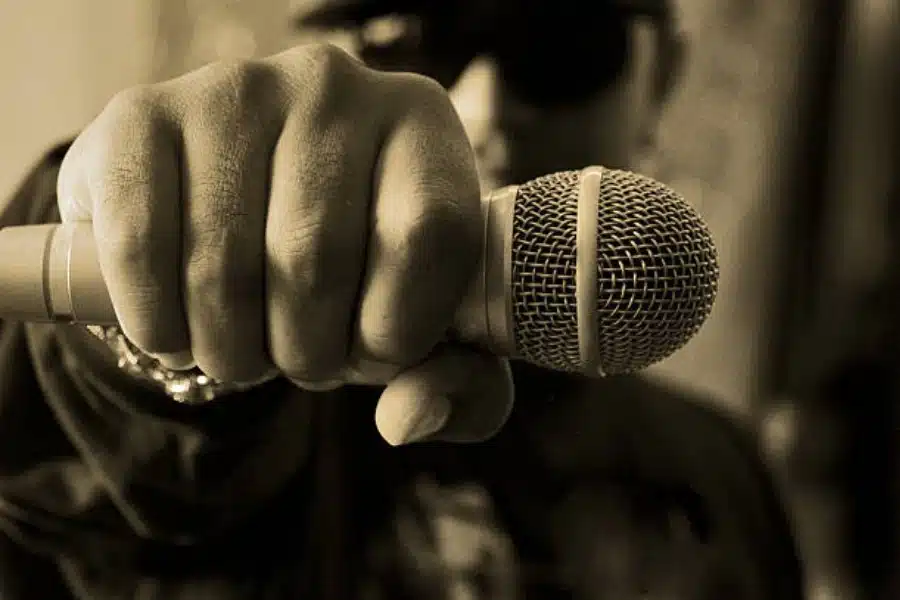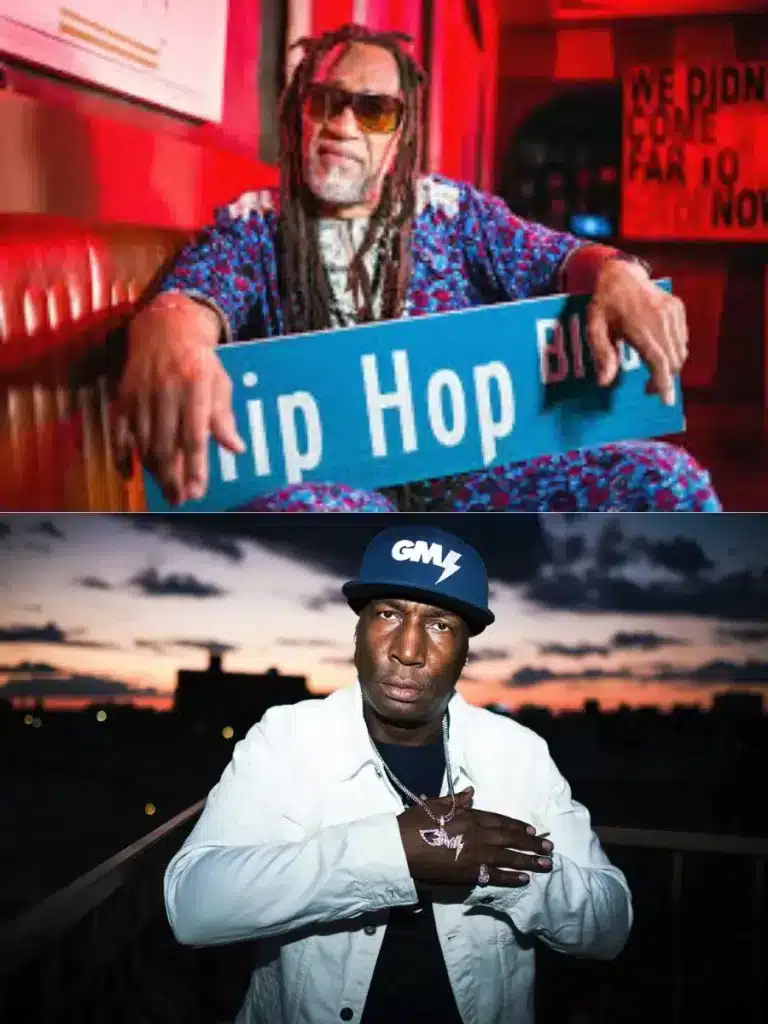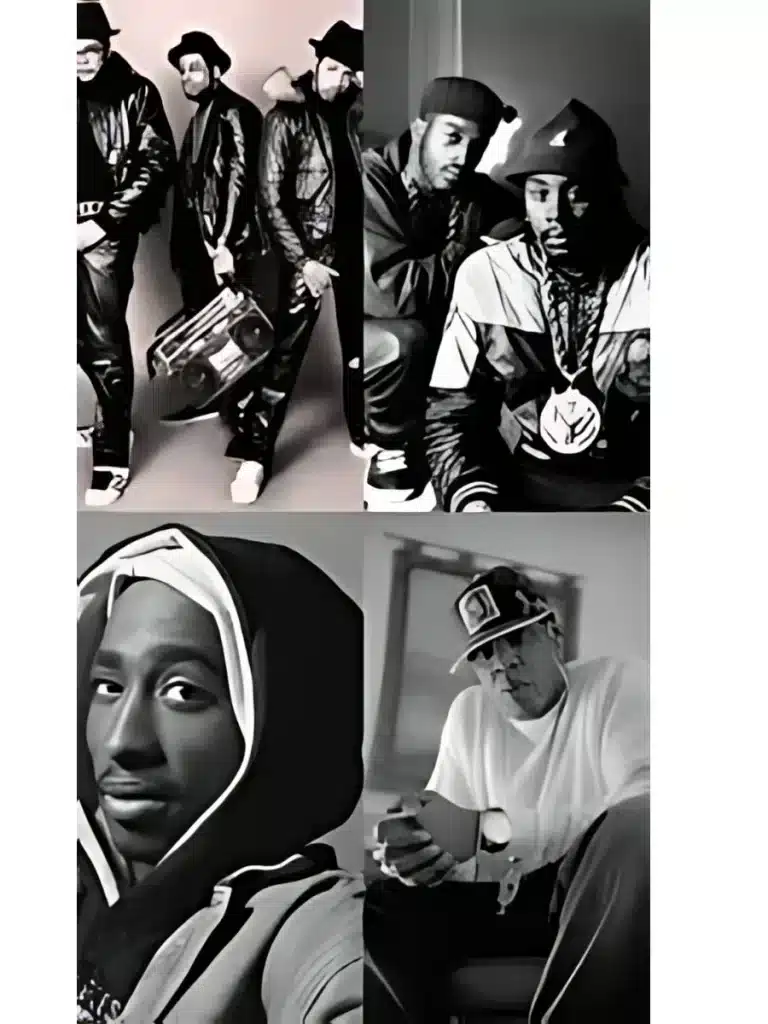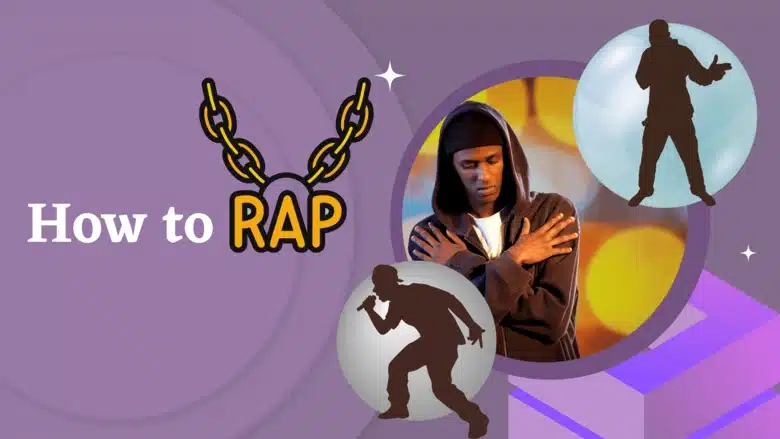One definitely gets pumped by listening to rappers spitting verses. Whether it be Nicki Minaj rapping “Super Bass” or Eminem leaving us in awe when performing “Godzilla”. Rap has also been beautifully used to provoke thoughts and address the darker side of human emotions and the world we live in. One example of such a kind of rap is the heart-wrenching “So Many Tears” by Tupac Shakur. The combination of wordplay and the art of using the beats, the rhythm captivates and hooks you to the rap. Rap has an undeniable impact on the world of music. Rap is also one of the key pillars and a distinct feature of hip-hop. In this blog, we will dive into the ways in which you can start your rapping journey by learning how to rap.

What is Rap
First and foremost, before starting to learn “How to Rap” we must know the meaning of rap. Rap is a style of music that uses rhyme, synthesized beat, and rhythmic speech. It is a form of verbal expression to communicate and relay messages and thoughts. It also includes the use of varying syllables and figurative speech. Rap is an integral part of hip-hop. Sometimes rap is also referred to as an acronym for “Rhythm and Poetry.”
How to Rap
1. Listen and Explore
You must have heard at least a few raps or the music of some famous rappers such as Drake, Kendrick Lamar, and others. They might have sparked your interest in rapping. To understand the style of music more expansively. Explore various other rappers and different styles of rapping. Increase your repertoire of rap and rappers. Listening to a wide variety of work, it will help you better understand the beats, rhythm, music genre as a whole, etc.
2. Go back in time
Try to learn about the history of rap. To understand the art form in-depth, make an effort to learn about it. For instance, its roots can be traced back to Jamaica and New York City. As mentioned before rap is a part of the hip-hop culture. Explore and learn about hip-hop culture and how it came to be. Why and how were the communities of African-Americans, Latinos, and the Caribbean in New York during the 1970s the backbone and the reason for the origination of Hip-Hop? The meaning behind hip-hop. How does rap contribute to the music genre and the culture of hip-hop? Knowing about the history of hip-hop and rap will help you understand the cultural significance and may even help you in bringing closer to the art form.
3. Follow the Rappers and Raps
When you are just beginning, take your favourite raps and try to rap them. Follow the song and the rapper. Try to match the rapper. Pay attention to the ways in which they are performing, the rhythm of the rap, the use of the beats, and the manner in which they are putting stress on the words or part of the words, etc. It will help you gain confidence and practical knowledge of the music style. Remember rap requires a set of skills. To acquire good skills, one must practice. When learning raps try to learn rap by different artists. It will not only add to your practice. It will help you in increasing your artist repertoire. Also, help in the development of your taste and identifying your preferred style of rapping.
4. Think of a Topic
After listening to the rappers and emulating them. You would be wanting to write your own rap. To do so you need to think of a topic that you would want to write about. We know that rap is a verbal form of expression. So, find a topic that sparks your interest. A topic that you would want to share and communicate with people.
5. Learn about the Beats
After thinking about the topic. Learn about the beats, as beats are an essential part of the song structure or rap structure. Learn about different types of beats, how are the beats used in rap, etc. For instance, usually, it is seen that a verse in a rap consists of 16 bars and a chorus generally consists of eight bars.
6. Decide on a Song structure/Rap structure
The structure of the rap is crucial for the coming together of a good rap song. The song structure defines the way one would want to emphasize the words, the style of the sentence, etc. A good rap structure results in delivering of the message in an articulate, organized manner. We would be mentioning a few common rap structures:
- Starting with a “Verse” followed by a “Chorus” then again a “Verse” and finally ending with a “Chorus.”
- Starting with a “Verse” followed by a “Chorus” then another “Verse” and “Chorus” adding a “Bridge” ending with a “Chorus.”
- Starting with a “Verse” followed by a “Chorus” then another set of “Verse” and “Chorus” ending with a set of “Verse” and “Chorus.”
- Starting with a “Verse” followed by a “Verse” then a “Bridge” and end with a “Verse.”
7. Write Everyday
Making writing your everyday habit is a must. Writing every day is a way of brainstorming. One day you might be able to write a verse. On other days maybe a few lines. The constant writing will eventually help you in many ways. Firstly, it will help you pen down your thoughts. Secondly, it will help you in creating enough material and draughts. You will be able to use and choose the best pieces of your writing for your own rap. It will also help you in building your vocabulary which is extremely important when writing rap.
8. Rhyme
Rhyming is an essential part of any rap. Rhyme brings musicality to the lyrics of the rap. So, when writing lyrics remember to rhyme. Many a time one might not know an alternative word that fits the lyrics and rhymes at the same time. During such times use the rhyming dictionary. Rhyming is very beneficial for the rhythm and flow of rap.
9. Understand Rhythms
Along with learning about the beats one must learn about the rhythm. The coming together of the beat and the rhythm creates the flow in rap. Flow is the rhythm in which the words are being rapped that matches or fits the beats chosen.
10. Keep Practicing
Be a diligent student of rap. For that one must be persistent and practice constantly. Constant practice will help in refining one’s skills. For example, a few exercises that one can do especially during the early days of learning how to rap are as follows:
Keep mumbling
Select a beat of your choice and then you can start by spitting different kinds of sounds it may be gibberish at first. But just remember whatever you say it should match or be on the beat. Then slowly try replacing the mumbling with words and subsequently try to form legible sentences.
Tongue twisters
Try saying the tongue twisters over and over again. Repeating the tongue twisters will help in clearing your diction, your way of initiation, and your pronunciation. Then slowly try to increase the speed at which was saying the tongue twisters. It will help in your breath control and also help in rapping the verses faster and with clarity. For example, try saying “red lolly yellow lolly” and “toy boat” continuously at a fast pace. it does sound simple but once you try it you will understand it’s not a stroll in the park. Also, when saying the tongue twisters try experimenting with different tongue twisters to emphasize different kinds of sounds. For instance, rolling your Rs, saying the sounds and words that use the tip of the tongue, etc. Some popular tongue twisters for rappers are as follows:
In the beginning start with some simple and short tongue twisters like:
- The thirty-three thieves thought that they thrilled the throne throughout Thursday.
- Imagine an imaginary menagerie manager imagining managing an imaginary menagerie.
- Excited executioner exercising his excising powers excessively.
- The Next nest will not necessarily be next to nothing.
If you are able to say the above tongue twister then try to increase the difficulty level, the following tongue twisters are of a moderate level:
- Round the rugged rocks, the ragged rascals ran. Rosco the rum runner rubbed out Rudy the rat for ruining his rum-running receipts.
- Betty Botter bought some butter but, said she, the butter’s bitter. If I put it in my batter, it will make my batter bitter. But a bit of better butter will make my bitter batter better. So she bought some better butter, better than the bitter butter, put it in her bitter batter, and made her bitter batter better. So t’was better Betty Botter bought some better butter.
At last, try long and heavy tongue twisters such as the following:
- To sit in solemn silence in a dull, dark dock, In a pestilential prison, with a life-long lock, Awaiting the sensation of a short, sharp shock, From a cheap and chippy chopper on a big black block! To sit in solemn silence in a dull, dark dock, In a pestilential prison, with a life-long lock, Awaiting the sensation of a short, sharp shock, From a cheap and chippy chopper on a big black block! A dull, dark dock, a life-long lock, A short, sharp shock, a big black block! To sit in solemn silence in a pestilential prison, And awaiting the sensation. From a cheap and chippy chopper on a big black block!
- About Socks: Give me the gift of a grip-top sock, A clip drape shipshape tip top sock. Not your spin slick slapstick slipshod stock, But a plastic, elastic grip-top sock. None of your fantastic slack swap slop. From a slap dash flash cash haberdash shop. Not a Knick knack knit lock knockneed knickerbocker sock. With a mock-shot blob-mottled trick-ticker top clock. Not a super sheet seersucker ruck sack sock, Not a spot-speckled frog-freckled cheap sheik’s sock. Off a hodge-podge moss-blotched scotch-botched block. Nothing slipshod drip drop flip flop or glip glop. Tip me to a tip-top grip top sock.
11. Record yourself
First of all, when you are practicing rap, do rap out loud. Record yourself rapping. Recording yourself rapping will enable you to listen and analyze your rapping skills. Thus, it will help in pointing out any mistakes or help in identifying the areas which need improvement.
12. Attempt Freestyling
Attempting freestyle rap does sound daunting. Here are some tips that can be useful when you begin your journey of freestyle rap. Put a beat of your choice on a loop. Write a line that goes with the beat and try to come up with lines that rhyme, match the rhythm, and is on the beat. Try being spontaneous, let the words flow out. You can also use apps and websites such as rap word generators. The rap word generator will keep producing random words and would keep changing the words within a given interval of time.
13. Reach out to others
Share your work with your friends and ask them about their views and opinions. Try to reach out to budding rappers, and musicians who can give you constructive feedback about your rap, style of rapping, method of rapping, etc. Reaching out to other people will also help you build connections and networks with fellow rappers and give you better access to the world of rap.
14. Try to Perform
All the knowledge that you have gained, the amount of practice that you have done, numerous verses and choruses that you have written need to be shown to the world. Find yourself an audience and perform in front of them. Performing for an audience will strengthen your confidence. It will help in honing your performance skills such as stage presence, communication with the audience, improving your skill of engaging with the audience, etc. Enter into different rap competitions and rap battles.
It will help you in calming your jitters. It will give you an understanding of how to rap under pressure and further strengthen your quick thinking and comebacks. You will also come in contact will various other rappers, and you get the opportunity to learn about different techniques that make others unique. All these events, competitions, and battles will add to your experience and help in gaining more practical skills and knowledge about the music style.
Pioneers of Rap
As we are nearing the end of the blog, we would like to mention a few pioneers who have greatly contributed and left a mark in the world of rap. We would like to start with “Old School Hip-Hop”. Clive Campbell also known as “DJ Kool Herc” is regarded as the father of hip-hop. A Jamaican immigrant who introduced the breakbeat style of Djing to the world. He also was a big part of the development of rhythmic poetry and delivery which had a heavy Jamaican influence. Joseph Saddler also known as Grandmaster Flash was also a DJ who was the reason behind the invention of Djing techniques like backspin, cutting, and scratching to name a few. Grandmaster Flash and the Furious Five never shied away from speaking about the harsh realities of ghetto life.

The 1980s and the 1990s are known as the “Golden Age of Hip-Hop” as hip-hop saw a boom in its popularity and saw mainstream success. During this era, the world was introduced to the likes of hip-hop group “Run-DMC” and hip-hop duo “Eric. B and Rakim.” By the late 1990s, hip-hop had risen to the highest of commercial success. It also saw a surge of diversification and the emergence of different styles of rap. The 1990s gave us rappers like Nas, Jay Z, Snoop Dog, Tupac Shakur, Vanilla Ice, MC Hammer and many more. Presently rappers like Doja Cat, Nicki Minaj, JID, Future, J. Cole, and Logic are many more dominating the scene.

Conclusion
Rap is a form of music that has a very deep connection with the lives of people. One of the strongest musical ways of expressing one’s thoughts, wants hopes and dreams. Like any other art, form rapping can be learned. For many it might be easy as rhythms and poetry might come naturally to some. Some people might find it difficult but with a lot of practice, determination, and effort one can definitely learn and become a good rapper. If you are struggling with learning on your own it’s advisable to consider professional musicians to guide you. So, keep listening, writing, and rapping.































